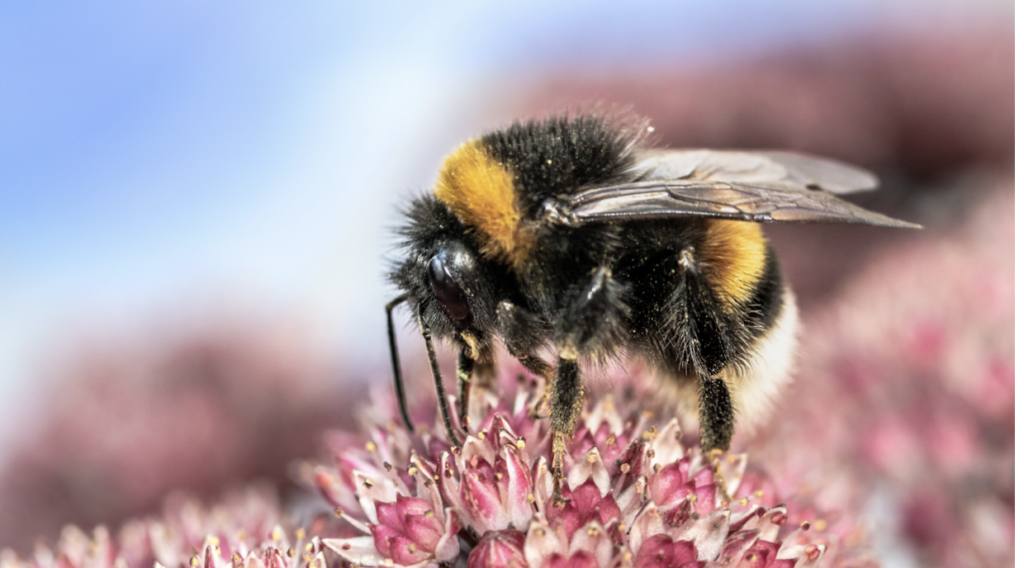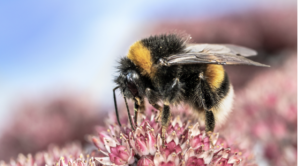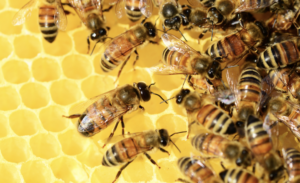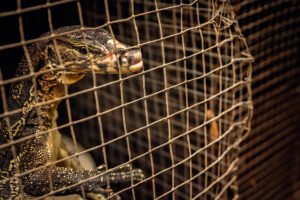
Bumblebees are disappearing. What you can do about it?


Rachel Spaulding
What’s with all the buzz to save the bumblebees?
Bees play a critical role in the environment. As pollinators, they support the growth and life of the base of every food chain; plants. Bees are the main insect pollinators, and honey bees alone are predicted to pollinate 80% of flowering plants in North America. The decline of certain bee populations is extremely bad news for the environment and everything that relies on it.
American bumblebee populations have been on a rapid decline in recent years. Despite the fact that their population has dropped almost 90% in the last 20 years, they are not yet federally considered an endangered species. Because they have not acquired this status and protection under the Endangered Species Act, they are not protected under federal or state law. According to a report from Live Science, the species has already disappeared from eight states including Wyoming, Oregon, North Dakota, Idaho, Vermont, New Hampshire, Rhode Island, and Maine. The International Union for Conservation of Nature found that 28% of North American bumblebees face the risk of some level of extinction.

Contrary to popular belief, the American honey bee is not endangered. Actually, their populations are higher than they’ve ever been. The bees are not indigenous to North America, and were actually brought by Europeans in the 1600’s. Since then they have become massively distributed livestock because of their lucrative ability to create wax and honey. Their thriving population might even be part of the risk to bumblebees. Their ability to dominate pollen and nectar resources is believed to be playing a part in the decline of indigenous bee species. In addition, scientists have found that honey bees can be vectors for diseases that are dangerous to native bees.
Other dangers posed to bee populations are habitat loss, pesticides and of course, climate change. Certain chemical pesticides can interfere with their forms of communication, sleep patterns, and make them more receptive to certain parasites. The changing and increasingly more unpredictable weather patterns associated with climate change can interfere with bees’ natural cycles. Unexpected frosts or extreme heat waves can be dangerous to the sensitive insects.
Protecting native bees is an extremely important cause. Bees are keystone species in the environment and must be protected for the sake of the whole ecosystem. The global food system relies on pollinators to produce the crops we need, and without them we would have no food.
 So what can I do to help?
So what can I do to help?
- Provide your native bees a home. Green-scape your lawn by landscaping with plenty of native plants and flowers
- Avoid using chemical pesticides that can be harmful to the (and let’s face it, probably you)
- Support local beekeepers and beekeeping organizations that are practicing safe and sustainable honeybee keeping
- Inform your beekeeping neighbors of your new knowledge and encourage them to do research of native bee populations in your area, and make sure their honey bees aren’t providing too much competition for native bees
Did you know SAFE Worldwide has a beekeeping program?
Sources
Magazine, S. (2021, October 6). The American bumblebee has nearly vanished from eight states. Smithsonian.com. Retrieved July 6, 2022, from https://www.smithsonianmag.com/smart-news/american-bumblebee-has-vanished-from-eight-us-states-180978817/
The truth about honey bees. National Wildlife Federation. (2021, June 1). Retrieved July 6, 2022, from https://www.nwf.org/Home/Magazines/National-Wildlife/2021/June-July/Gardening/Honey-Bees
Turner, B. (2021, September 30). American Bumblebee could be officially declared endangered. LiveScience. Retrieved July 6, 2022, from https://www.livescience.com/american-bumblebee-endangered
Disclaimer: The opinions, beliefs and viewpoints expressed by the various authors and forum participants on this web site are their own and do not necessarily reflect the opinions, beliefs and viewpoints of SAFE Worldwide.





